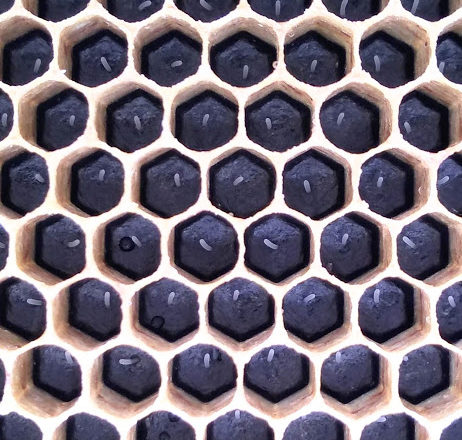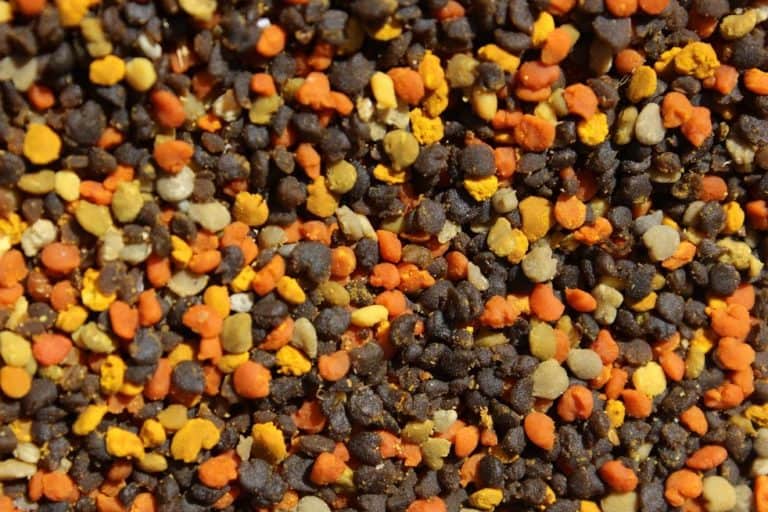I am fortunate to spend a lot of time reading and listening to a lot of beekeeping and bee science topics which inevitably leads to coming across terms I have to look up. A couple years back I compiled a list of these challenging words and turned it into a Five Dollar Bee Words blog. Since that post I’ve continued to encounter words that have sent me to the dictionary so I’ve put together another list.

Chorion is the flexible membrane surrounding honey bee eggs that is absorbed as the egg grows into a larva.
Dioecious plant species have a separation of male (pistil) and female (stamen) reproductive parts on separate plants with only the female plants bearing fruit. Kiwifruit is an example of a dioecious cultivated crop where 1 male vine is maintained for every 6-8 female vines to optimize production in an orchard.
Entomophily refers to plants or flowers that require insects to move pollen within or between flowers for pollination. Other means of pollination include Anemophily (wind), Zoophily (vertebrate), and Hydrophily (water).
Gynandromorphs are individual bees that contain a mix of anatomical components of both females (gyn) and males (andro).
Hamuli are a series of tiny hooks on the leading edge of the hindwings that fit into grooves on trailing edge of the forewings allowing the wings to function as a single pair in flight.
Hydroxymethylfurfural, also known as HMF, is an organic compound created by heating sugar. HMF is poisonous to bees and can be problematic when High Fructose Corn Syrup (HFCS) used for feeding bees is heated or stored improperly
Invertase is an enzyme produced by honey bees to assist with transforming nectar into honey. Bees add invertase when processing nectar, which is primarily sucrose and water, resulting in the simpler sugars glucose and fructose.
Ommatidia are the photoreceptors that make up the individual facets of the compound eye allowing bees to detect shape, color and movement. The three Ocelli located between the compound eyes detect light intensity and complete the bees visual capabilities.
Polylectic insects including honey bees collect pollen from a wide variety of plants compared to monolectic which forage on a single type of flower.

Sclerites are the individual plates of chitin that collectively make up the exoskeleton of bees and other insects. The sclerites are joined to each other to allow for flexibility and movement of the body while maintaining structure and rigidity.
Ventriculus is the midgut of the bee located within the abdomen that functions as a stomach digesting both nectar and pollen.
